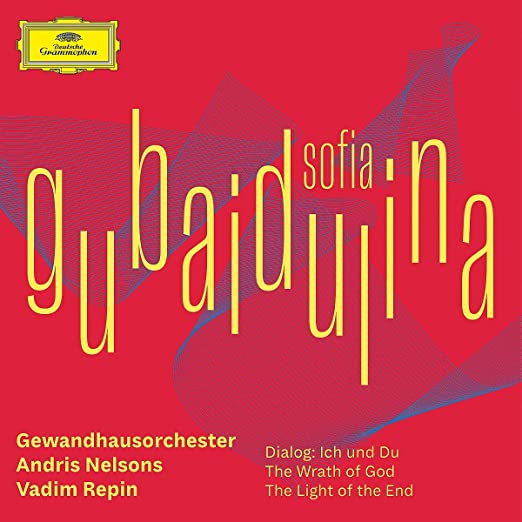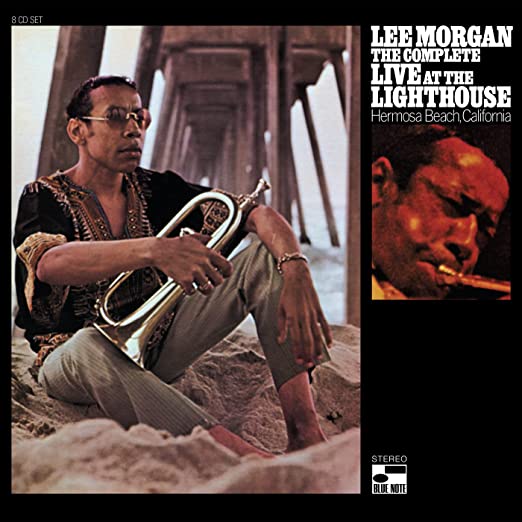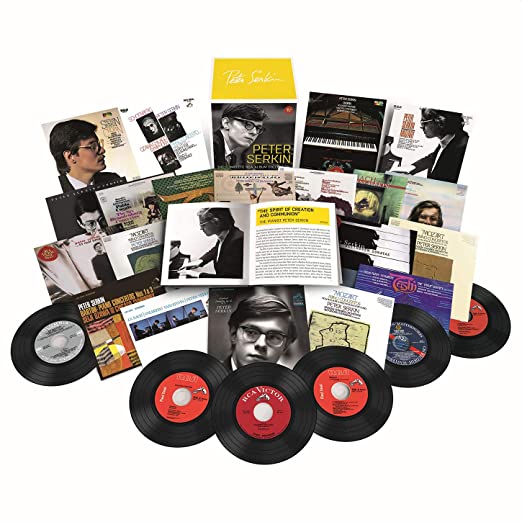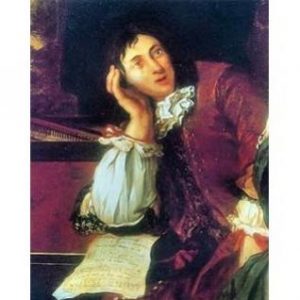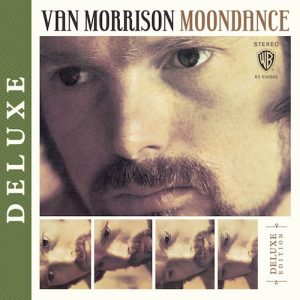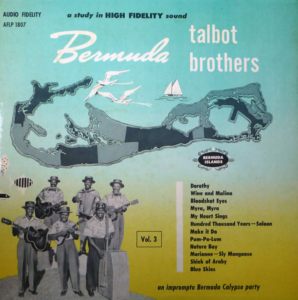George Walker, Five Piano Sonatas, (1953 - 2003) Steven Beck, piano. Bridge Records 9554.
It's a bit early in the year to pronounce a Record of the Year, and perhaps I'm making the call based partly on guilt for my ignorance: why have I not heard of this extraordinary composer? His music is a brilliant blend of modernism and the American muse. We can't stop listening to it at our house. Walker (1922 - 2018) is "the first black person to be accepted at the Curtis Institute of Music, first to study with Nadia Boulanger, and the first to win a Pulitzer Prize in Music." If I go on here, it will just be effusive praise, all of which he deserves but none of which he needs. Do not miss this recording. Great thanks to Bridge Records, champions and preservers of The New, for releasing it.
George Perle, Solos and Duos. Many musicians. 2 CDs. Bridge 9546 A/B.
And as long as we're with Bridge, here's another. Early modernism in all of the arts initially defined its role as attacking traditional expectations, breaking down walls, etc. But what interests many of us more is what happened when it stopped attacking and set out to establish a new norm, a new tradition. Composers and listeners alike realized that the modernist aesthetic was a landscape that one could adapt to, inhabit even.
American composer George Perle (1915 - 2009) is not among the best known or most distinguished of his generation, but one of the most enjoyable to listen to as he boldly, outspokenly, and joyfully farms the fields of twentieth century modernism. This set of his solos and duos for violin, clarinet, cello, double bass, bassoon, and piano is a rich and various trip through the aesthetic that many of us have come to feel especially at home in. The earliest work here was composed in 1943, the most recent in 2004 when Perle was eighty-nine. Sonics are spectacular, by the way.
Harrison Birtwistle, Chamber Works. Nash Ensemble. Bis SACD 2561.
Harrison Birtwistle (b. 1934) is to my ears the most interesting of the British ultra-modernists, the new wine in new bottles 'school.' Take that as both an invitation and warning. If you don't find the contemporary avant-garde enjoyable, you won't enjoy Birtwistle, at least on first hearing. This album didn't check in for me until listening session No. 3—and I'm a fan! It's hard to believe he's 78 and still doing his remarkable thing. I like him best in his chamber music as here and in the string quartets (Arditti Quarter on Aeon). This music is for comparably small ensembles and all composed in the current century.
Jean-Marie Leclair, Violin Sonatas, Book 3, Op. 5, Nos. 1-4. Adrian Butterfield, violin; Sarah McMahon, cello; Silas Wollston, harpsichord. Naxos 8.574341.
This is the fifth volume of the best recorded performances of Leclair (1697-1764) I know of, and I've heard a lot of them. All but the lead, Adrian Butterfield, have changed, but the wonder of this music remains intact. Butterfield is a leader in the field of baroque violin playing, so no surprise there. "Exquisite Italianate lyricism and French dance idioms," says the album commentator, and I can't better that. Under the big names of every artistic era hide some of the best artists. A wonderful, and important release.
Lennie Tristano, Personal Recordings, 1946 - 1970. 6 CDs. Mosaic/Dot Time MD6-272. (Limited to 5,000 albums)
For those of you believe, as I do, that jazz pianist Lennie Tristano (1919 - 1978) leads directly to Keith Jarrett and Gonzalo Rubulcaba with no truly significant stops in between, this new Mosaic box of his music will be essential. My college girlfriend introduced me to him in the late 1950's and I believed him before I knew anything about jazz. Even the few barely listenable wire recording cuts here on the program give us a strong hint of what lay ahead. Once we're into the 1950's and 1960's, where all is sonically well and his style has matured, it's jazz heaven. I don't know how Mosaic is hanging in these days, but this album is firm evidence that all is as good as ever in Stamford.
Last time out, I wrote that it is inappropriate in this venue for a music reviewer to sing the praises of the reviewing system he used for his article, especially as a dealer who sells it. And then went on to do precisely that, piling praise on Jeff Kalt, Gilbert Yeung, and Jean Claude Reynaud who designed and built the system used for the audition. To add malfeasance to injury, I'm going to repeat my indiscretion by doing the same, this time by praising Audio Note's Peter Qvortrup and his brilliant designer, Andy Grove, the other major figures I've spent the last quarter century living with. It is their particular genius to have discovered how to capture and then place the primary focus on the center of instruments and voices, where many feel the essence of their beauty lies -- the sound we hear from what some music lovers consider the dream spot, twelve to fifteen rows back from the stage. In 2004, I rewarded myself for retiring from my 'careers' as English professor and educational grants fund-raiser, by taking a trip to the Aldeburgh Music Festival in Suffolk, England. I pre-ordered tickets to all of the performances and asked for the best seats in the hall. When I arrived at the first concert in the Snape Maltings concert hall and took my seat, I was surprised and a bit disappointed to find myself well back from the stage. When the first notes were stuck, I realized I had the best seats in the hall.
Main system used for today's reviews: Audio Note CD5.1 CD player, Tonmeister Silver Signature 9 watt integrated 300B tube amplifier, E/SPe HE loudspeakers, Sogon interconnects and Sogon Minor speaker bi-wired speaker cable. Mapleshade Samson equipment rack. All CD's purchased from Presto, a superb international retailer in the UK. www.prestomusic.com.
Bob Neill, a former equipment reviewer for Enjoy the Music and Positive Feedback, is proprietor of Amherst Audio in Western Massachusetts, which sells equipment from Audio Note (UK), Jean Marie Reynaud (France), Resolution Audio (US), and Gilbert Yeung Designs, formerly Blue Circle (Canada).










